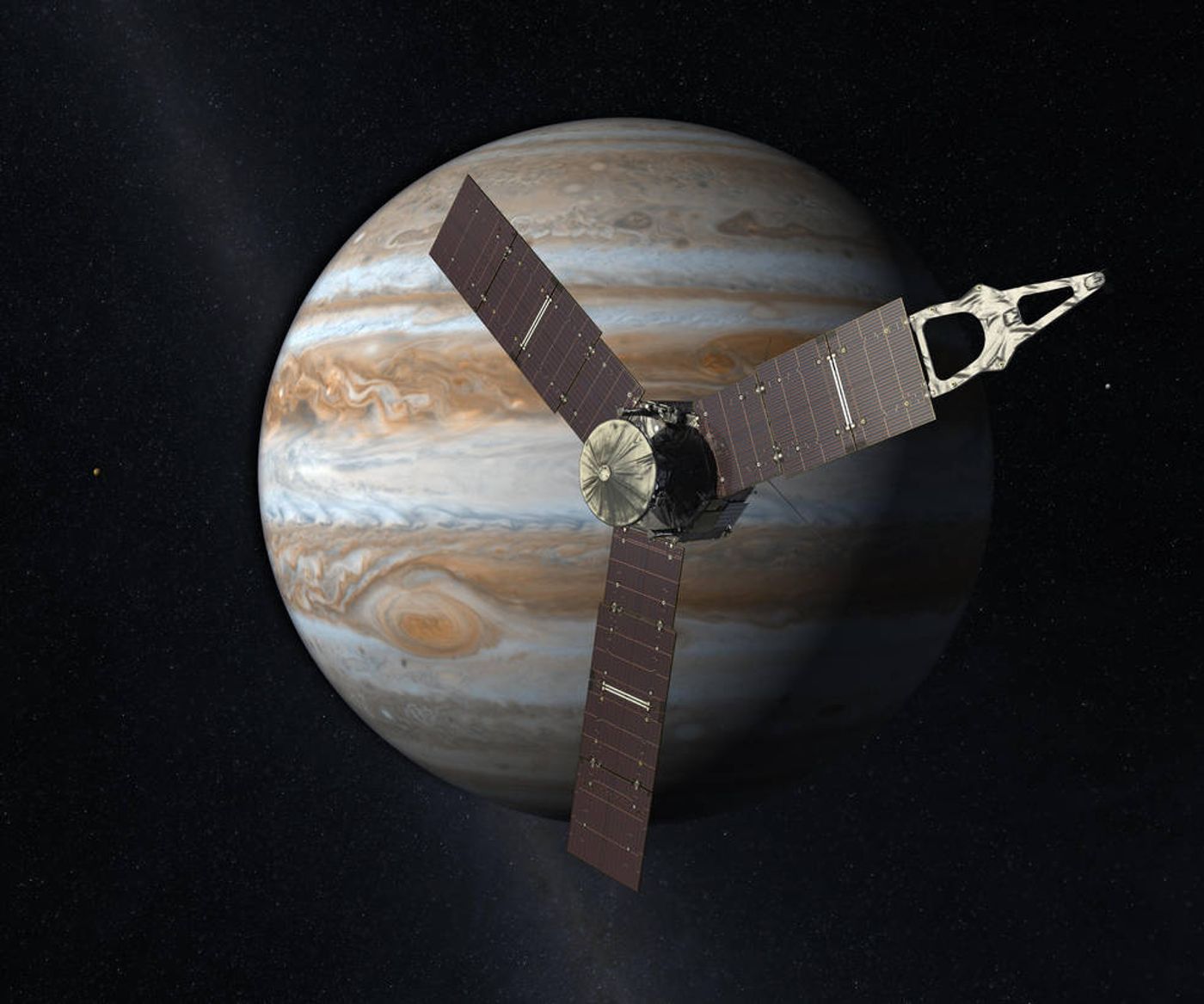NASA's Juno Spacecraft Breaks Record for Distance on Solar Power
NASA broke a record this week when its Juno spacecraft, launched in 2011 to get itself into orbit around Jupiter and study the planet and its surroundings, traveled the longest distance of any spacecraft powered solely by solar power.

This Wednesday at 11 A.M. PST, NASA announced Juno was 493 million miles away from the Sun, breaking the standing record of the European Space Agency’s Rosetta spacecraft at 492 million miles away from the Sun where it was keeping in touch with Philae on comet 67P.
"Juno is all about pushing the edge of technology to help us learn about our origins," said Scott Bolton, Juno principal investigator at the Southwest Research Institute in San Antonio. "We use every known technique to see through Jupiter's clouds and reveal the secrets Jupiter holds of our solar system’s early history. It just seems right that the sun is helping us learn about the origin of Jupiter and the other planets that orbit it."
Because the distance of Jupiter from the Sun is around five times greater than the distance of the Earth from the Sun, there is significantly less sunlight out there for the spacecraft to operate off of. In fact, NASA says there is 25% less sunlight out there to make use of.
To help with this problem, Juno has massive solar panels designed to absorb absolutely as much sunlight as possible. These panels are approximately 30 feet long and have well over 18,000 solar cells built into them.
The spacecraft is also well-designed to be power efficient, so when it eventually arrives at its destination in 2016, the 500 watts that it’ll be generating will be more than enough to power the spacecraft’s sensors and equipment.
"It is cool we got the record and that our dedicated team of engineers and scientists can chalk up another first in space exploration," said Bolton. "But the best is yet to come. We are achieving these records and venturing so far out for a reason -- to better understand the biggest world in our solar system and thereby better understand where we came from."
The spacecraft will dive into Jupiter’s clouds after 33 orbits when it arrives on Independence Day of 2016, allowing its sensors to capture data about the planet’s atmosphere and magnetosphere.
Source: NASA








